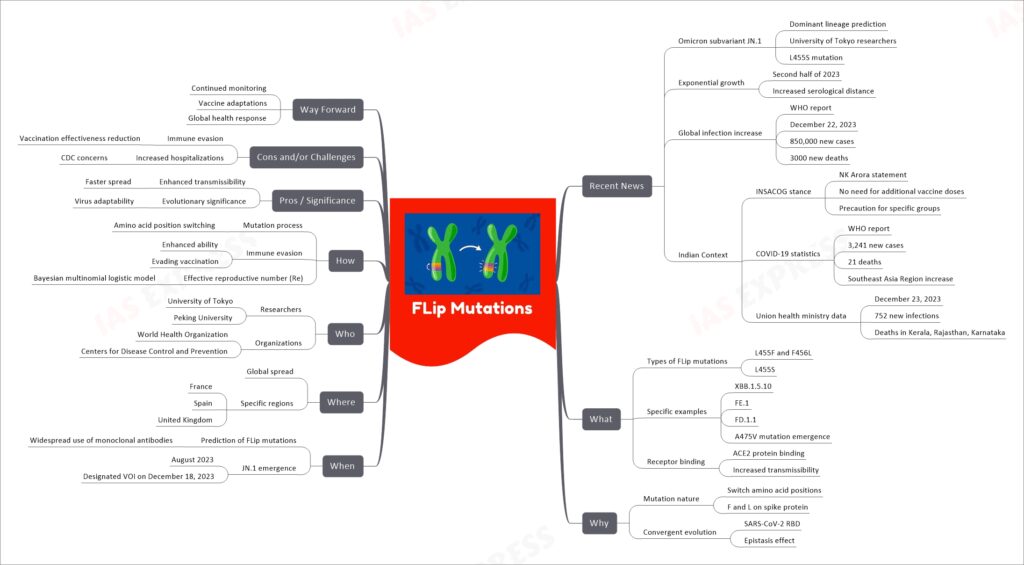FLip Mutations

In simple terms, “FLip” mutations refer to specific genetic alterations in the SARS-CoV-2 virus, particularly in its spike protein. These mutations involve the switching of amino acid positions, leading to enhanced transmissibility and potential immune evasion. Initially predicted due to the widespread use of monoclonal antibodies for COVID-19 treatment, these mutations have been observed in several variants and sublineages, such as JN.1 and XBB. Recent developments have shown an increase in cases globally, with significant concerns over the effectiveness of existing vaccines against these mutations. The situation in India reflects a similar pattern of increased cases and the necessity for continued vigilance and adaptation in health responses.
If you like this post, please share your feedback in the comments section below so that we will upload more posts like this.

